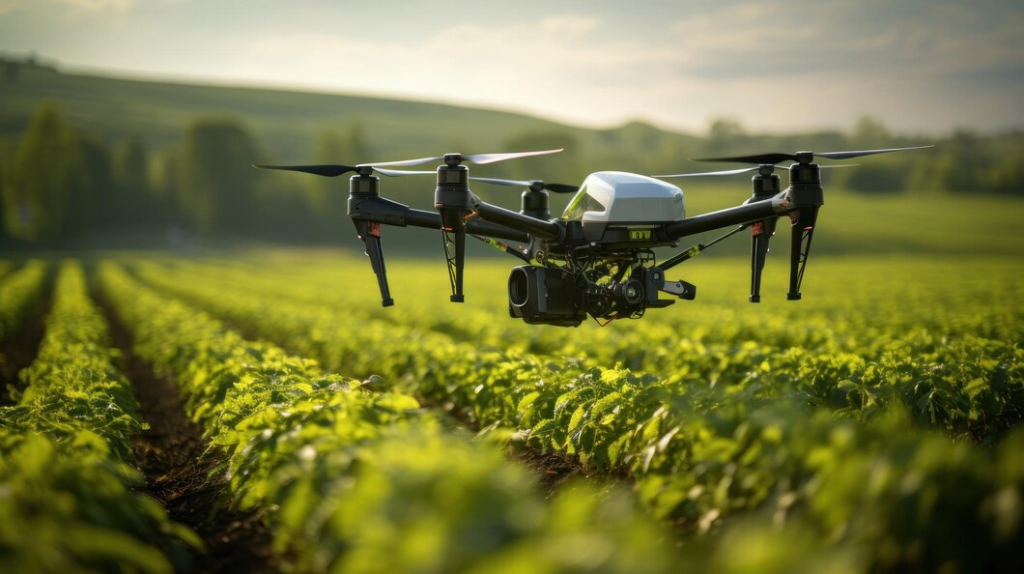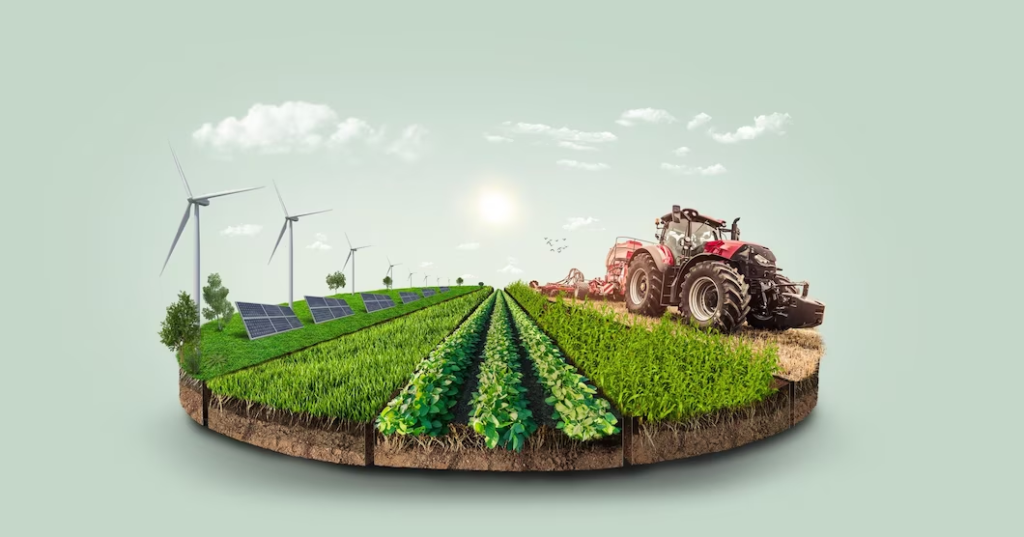
In the vast fields of agriculture, technology has emerged as a game-changer, revolutionizing traditional farming practices and ushering in an era of efficiency and sustainability. As we delve into the world of “Tech in Agriculture: Farming Innovations,” it becomes evident that these advancements are not merely buzzwords but crucial elements shaping the future of global food production.
Smart Farming
In the realm of agriculture, the term “smart farming” is gaining prominence. Smart farming involves the integration of cutting-edge technologies, with a key player being the Internet of Things (IoT). By seamlessly connecting devices and systems, farmers can monitor and control various aspects of farming operations in real time. Imagine a farm where irrigation systems, weather stations, and machinery communicate intelligently, optimizing resources and minimizing waste.

Precision Agriculture
Precision agriculture takes farming to a whole new level by leveraging technologies such as drones and sensors. Drones equipped with high-resolution cameras can survey large fields, providing farmers with invaluable insights into crop health and identifying potential issues. Sensors, embedded in the soil or attached to machinery, collect data on moisture levels, nutrient content, and more. This data-driven approach allows farmers to make informed decisions, resulting in enhanced productivity and reduced environmental impact.
Artificial Intelligence in Agriculture
Artificial Intelligence (AI) is not confined to sci-fi movies; it is actively contributing to agricultural practices. AI algorithms analyze vast amounts of data, offering insights into crop management, disease detection, and yield prediction. Farmers can make data-driven decisions, optimizing resources and increasing overall efficiency. The predictive analysis provided by AI empowers farmers to anticipate challenges and proactively address them.

Robotics in Farming
Robots are no longer restricted to factory floors; they have found their way into agriculture. From planting and harvesting to monitoring crop health, robots are making significant contributions. These automated systems not only alleviate the physical burden on farmers but also improve precision and consistency in tasks. As technology advances, we can expect robots to play an increasingly vital role in shaping the future of farming.

Blockchain in Agriculture
Blockchain technology, known for its role in secure and transparent transactions, is making waves in agriculture. In supply chain management, blockchain ensures transparency and traceability from farm to table. Consumers can trace the journey of their food, guaranteeing authenticity and quality. This technology is a boon for both farmers and consumers, fostering trust and accountability in the agricultural sector.
Data Analytics in Farming
Data analytics is a powerful tool for farmers, offering actionable insights for better decision-making. By analyzing data on weather patterns, soil conditions, and crop performance, farmers can optimize their strategies. However, the implementation of data analytics comes with challenges, including the need for robust infrastructure and data security measures. Overcoming these challenges is crucial for maximizing the benefits of data-driven farming.

Sustainable Agriculture Technologies
In the pursuit of a greener future, sustainable agriculture technologies are gaining traction. These innovations focus on minimizing environmental impact, promoting biodiversity, and conserving natural resources. From precision irrigation systems to eco-friendly pest control methods, technology is playing a pivotal role in steering agriculture toward a more sustainable and resilient future.
Challenges and Opportunities
While the benefits of technology in agriculture are immense, challenges persist. Farmers face barriers such as initial investment costs, technical literacy, and the digital divide. However, these challenges present opportunities for innovation and collaboration. Governments, private sectors, and educational institutions can work together to create solutions that make agricultural technologies more accessible and farmer-friendly.
Future Trends in Agriculture Technology
The future of agriculture technology holds exciting possibilities. Emerging technologies such as gene editing, vertical farming, and nanotechnology are poised to transform the landscape further. These innovations aim to address challenges like population growth, climate change, and food security, ensuring a resilient and sustainable future for agriculture.

Case Studies
Real-world examples illustrate the tangible impact of technology on agriculture. From the use of AI in predicting crop diseases to the deployment of drones for crop monitoring, success stories abound. These case studies serve as beacons, guiding farmers and policymakers in adopting and adapting technology for optimal results.
Impact on Global Agriculture
The global impact of technology in agriculture cannot be overstated. As nations adopt and integrate these innovations, the potential for increased food production and economic development grows. Technology in agriculture contributes not only to local food security but also to global initiatives addressing hunger and poverty.
Importance of Training for Farmers
To fully harness the benefits of agricultural technology, training, and education are paramount. Farmers need to be equipped with the knowledge and skills to navigate the digital landscape. Training programs, supported by governments and organizations, play a pivotal role in empowering farmers to embrace and leverage technology for sustainable farming practices.
Government Initiatives and Policies
Governments worldwide are recognizing the importance of supporting technology adoption in agriculture. Policies promoting innovation, sustainability, and financial incentives for tech integration are becoming commonplace. Government initiatives play a crucial role in creating an enabling environment for farmers to explore and implement technology-driven solutions.

Conclusion
In summary, the fusion of technology and agriculture is a revolutionary process rather than a fad. All of the advances that have been discussed from blockchain applications to smart farming help to make the agriculture industry more resilient, effective, and sustainable. Future farming advances must be continuously explored and used if food security for the world’s expanding population is to be ensured.
FAQs
- How can small-scale farmers benefit from technology in agriculture?
- Small-scale farmers can benefit by adopting cost-effective technologies such as mobile apps for crop management and community-based knowledge-sharing platforms.
- Are there any privacy concerns associated with the use of agricultural technology?
- Privacy concerns exist, particularly with the collection of data through IoT devices. It is essential to have robust data protection measures in place.
- What role can governments play in promoting technology in agriculture?
- Governments can play a pivotal role by implementing policies that incentivize technology adoption, providing financial support, and investing in educational programs for farmers.
- How do sustainable agriculture technologies contribute to environmental conservation?
- Sustainable agriculture technologies focus on minimizing environmental impact by promoting practices that conserve soil, water, and biodiversity.
- What are the challenges faced by farmers in integrating technology into their practices?
- Challenges include initial investment costs, lack of technical literacy, and the need for reliable internet connectivity in rural areas.



